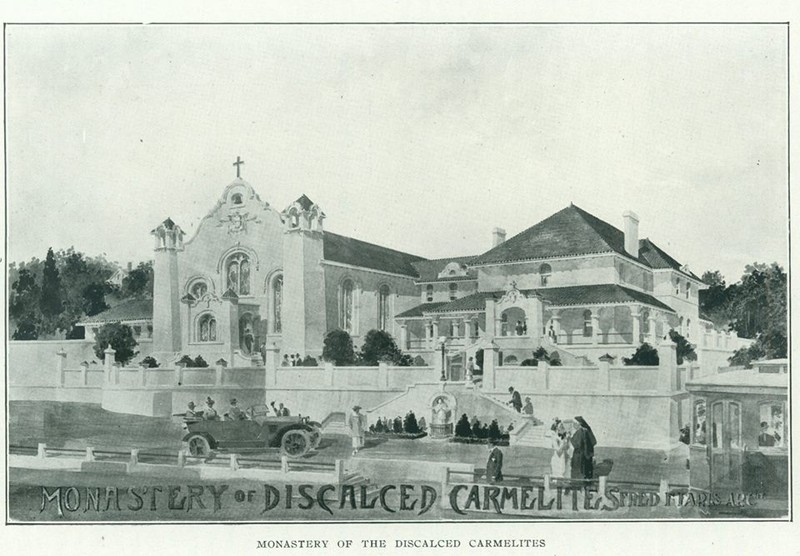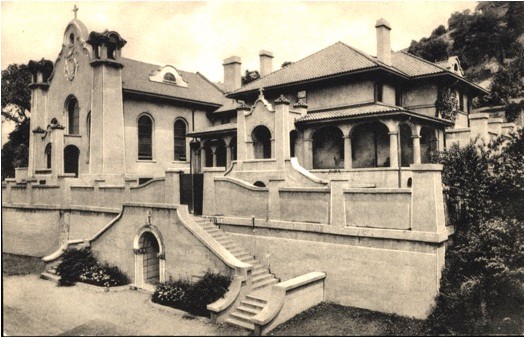Mt. Carmel Monastery (1917-1974)
Introduction
Text-to-speech Audio
Images
An early sketch of the monastery

Photo of the monastery before it began to show extreme signs of age

Backstory and Context
Text-to-speech Audio
After they moved to the Wheeling area in 1913 at the request of Bishop Patrick Donahue, planning was started to house a group of Discalced Carmelite Sisters. As members of the Order of the Discalced Carmelites, the sisters believed in a lifestyle of seclusion and piety. Many sisters remained in the Mt. Carmel Monastery for the remainder of their lives with little contact with the outside world.
The Mt. Carmel Monastery was named for the Carmelite Sisters for whom it was built. Designed by notable Wheeling architect Frederick Faris, the structure was completed and dedicated in 1917. The style of the monastery was unusual for the area and Faris. In honor of the Teresa de Ahumada, founder of the Discalced Carmelite Order, Faris designed the monastery in a Spanish style. St. Teresa created the Order in 1593 and began thirty-two monasteries in Spain.
For many years the only section of the monastery accessible to outsiders was the public chapel. The remainder was dedicated to the nuns and secluded to ensure their privacy. The nun’s cells were plain, and their beds were made of plywood without mattresses. Though they would not interact directly with their neighbors, the nuns were known to write prayer cards for them and their own newspaper which locals were welcome to read.
Though initially a very strict order with little room for deviation, by the 1960s the order was in decline and began to relax its policies on seclusion. The sisters were gradually allowed to interact more with the community and were even allowed outside of the monastery. As many of the sisters of the order were old and dying and the order was not obtaining new members, the sisters left the monastery in 1974. The surviving members of the order made arrangements to be relocated at other Carmelite monasteries.
The building was purchased by a developer in 1974 and converted to apartments. The building's current state reflects the age of the building and the expense of maintaining an aging historic structure. Despite crumbling banisters and cracked facades, Mt. Carmel Apartments clearly reflects the building's history as a former monastery.
Sources
McKenzie, Dylan. New Lives for Old Buildings in Wheeling. The Intelligencer. December 04, 2016. Accessed February 05, 2019. http://www.theintelligencer.net/news/community/2016/12/new-lives-for-old-buildings-in-wheeling/.
Gilot, Jon-Erik. A Spiritual Legacy -- Women Religious in Wheeling. Weelunk. July 31, 2018. Accessed February 05, 2019. https://weelunk.com/a-spiritual-legacy-women-religious-in-wheeling/.
